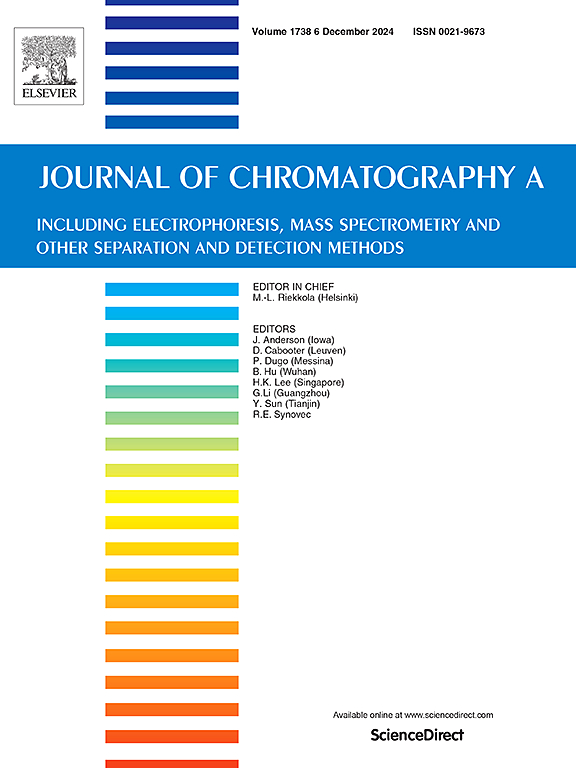Evaluation of size-based distribution of components in VYXEOS® liposomal formulation using asymmetric flow field-flow fractionation
IF 4
2区 化学
Q1 BIOCHEMICAL RESEARCH METHODS
引用次数: 0
Abstract
VYXEOS® is the first FDA-approved dual-API liposomal formulation containing two different chemotherapeutics, daunorubicin and cytarabine at a 1:5 molar ratio. Analysis of bulk formulation does not provide insight to size-based distribution of APIs and excipients, therefore asymmetrical flow field-flow fractionation (AF4) was utilized for the size-based separation of VYXEOS® liposomes and collected size fractions were further analyzed for the concentrations of APIs, lipid excipients, and copper. Analysis results revealed a significant variation in API distribution across the size fractions, with the larger liposomes encapsulating a higher ratio of cytarabine to daunorubicin compared to the smaller liposomes, while lipid excipient composition was held constant across the size range. We attribute the size-based variation of API ratios to structural change during API loading and sequence of API loading. Cytarabine is first passively loaded into liposomes containing copper gluconate, and then daunorubicin is actively loaded using copper gradient where the daunorubicin is retained in the liposomes as a copper complex. This method can be extended to characterize various single and dual-API liposomal nanocarriers during drug product development and/or post market quality control.
利用非对称流场-流动分馏法评估 VYXEOS® 脂质体配方中基于粒度的成分分布。
VYXEOS® 是首个获得 FDA 批准的双 API 脂质体制剂,含有两种不同的化疗药物,即 1:5 摩尔比的达乌比星和阿糖胞苷。对散装制剂的分析无法深入了解原料药和辅料的粒度分布,因此采用了非对称流场-流动分馏(AF4)技术对 VYXEOS® 脂质体进行粒度分离,并对收集的粒度分馏物进一步分析原料药、脂质辅料和铜的浓度。分析结果表明,不同粒度的脂质体中原料药的分布存在明显差异,与较小的脂质体相比,较大的脂质体中包裹的阿糖胞苷和达乌诺比星的比例更高,而不同粒度的脂质辅料成分保持不变。我们将原料药比例的大小变化归因于原料药装载过程中的结构变化和原料药装载顺序。首先将阿糖胞苷被动地装入含有葡萄糖酸铜的脂质体,然后使用铜梯度主动装入达柔比星,在此过程中,达柔比星作为铜复合物保留在脂质体中。该方法可在药物产品开发和/或上市后质量控制过程中,扩展用于表征各种单API和双API脂质体纳米载体。
本文章由计算机程序翻译,如有差异,请以英文原文为准。
求助全文
约1分钟内获得全文
求助全文
来源期刊

Journal of Chromatography A
化学-分析化学
CiteScore
7.90
自引率
14.60%
发文量
742
审稿时长
45 days
期刊介绍:
The Journal of Chromatography A provides a forum for the publication of original research and critical reviews on all aspects of fundamental and applied separation science. The scope of the journal includes chromatography and related techniques, electromigration techniques (e.g. electrophoresis, electrochromatography), hyphenated and other multi-dimensional techniques, sample preparation, and detection methods such as mass spectrometry. Contributions consist mainly of research papers dealing with the theory of separation methods, instrumental developments and analytical and preparative applications of general interest.
 求助内容:
求助内容: 应助结果提醒方式:
应助结果提醒方式:


